Jimmy Fallon. Drew Barrymore. The Sox. Of course, folks, we’re talking about the cinematic pearl Fever Pitch, a romantic comedy gem set upon the backdrop of the beloved Red Sox’ memorable 2004 World Series championship. But Fenway isn’t the only park in the greater Boston area; there are actual non-corporate areas with beautiful flowers and plants where people go to congregate.
So whether you’re a film buff green thumb inspired by beloved Fever Pitch characters Ben Wrightman and Lindsay Meeks—who probably went to a park in one scene—or you’re a city transplant who grew up around gardens, many of us feel the desire to dig our fingers into some dirt, plant a few seeds and watch them grow because, along with the coming warm weather, live flowers and greenery have serious mood-boosting power. They also have the ability to liven up almost any façade, and add appeal (and potentially value) to both urban and suburban properties. But, you can’t just slap a fern on your frontage and call it a day. Climate, placement, species, and, you know, how to actually keep the things alive all matter when considering landscaping and planting in urban settings.
What, and Where?
First things first: You’ve got to figure out what is best to plant. As much as you like roses, your desire for them to grow doesn’t mean they are going to grow, let alone thrive, on your small balcony space that gets very little sun but lots of brownish water dripping from the drain pipe above.
“Primarily, the thing that condos are doing currently, and it makes sense, as it’s highly cost-effective—is opting for low-cost/low-maintenance perennials, as they come back year after year,” says Kathy Curtiss, co-owner and designer at Doug Curtiss Landscape Designing, Inc. in Southborough, Massachusetts “And there are many factors to be considered: is the area in which you’re planting water-accessible? How much sunlight does it receive? But there are plenty of shades and perennials that you can plant. It’s also nice to spot in some annuals, to provide some off-season color. Because perennials give you nice color and texture at specific times, but no perennial blooms for weeks on end, while annuals can bloom for three solid months, should you plant at, say, the end of May.”
“One of the common mistakes I see,” says Mandi Maloney, a horticulturist, landscape environments specialist and integrated pest manager with Garrick-Santo Landscape Co. in Malden, Massachusetts, “is that people will go to a garden center and buy the prettiest things they see.” The problem, she adds, is that the “prettiest” plant on display may not last through the season, leading to disappointed residents. When planning landscaping—whether for an extensive suburban property or an urban courtyard—all four seasons should be taken into consideration. Spring, when winter-weary residents are looking for mood-brightening color, is the shortest season. Summer plantings, Maloney says, will begin in late April or early May, followed by fall plantings in mid-August to mid-September. And even winter gets attention with evergreens in containers, or even cut branches or arrangements that will provide texture and color.
Of course, in urban areas like Boston, populated with tall buildings, open sunlight is a rarity, and water access can be more difficult to come by than in the suburbs. But light is easy to correct for, Maloney says, by selecting shade-loving plants. A bigger challenge, she says, are “heat islands” in city gardens. “People don’t always recognize how hot it is. In a small space, plants tend to dry out.” To avoid evaporation from the soil, it’s important to use mulch in gardens, or moss in container plantings. Water-holding crystals can also be worked into the soil during planting, she says.
Water, she adds, will help to mitigate the effects of heat. “But it’s also possible to over-water,” she cautions—a situation that’s not unusual when volunteers or condominium staff are maintaining garden spaces.
How Does Your Garden Grow?
After you’ve selected the appropriate blossoms for your patch of green, think about the real estate itself and don’t try to diversify too much. “Gardens look best when there are groupings of plants, not just lots of different things,” says Jeanette Dragonetti, ASLA, a landscape designer at Dragonetti Brothers in Brooklyn, New York. “Try to make a more natural landscape where there would be areas of five to seven plantings, not individual plant types mixed together in ones and twos. Often the most impressive gardens give a sense of abundance, balance, and lushness, and that is achieved with planting many of the same type of plant in cohesive patterns. Better to have just [a few] types of plants in your building’s entrance garden planted densely than 20 different types all competing for attention.”
A common error that can be made by landscape committees, notes Maloney, is a lack of scale. Residents who move into suburban condos or large buildings after living in single-family homes may be thinking about their previous small entry-way gardens. “It’s a different scale than a large building or a group of buildings,” she says.
Gardens are, of course, meant to be admired, but take care not to let your fans trample, trash or, if they have four legs, pee on your plants. “Dogs and people are the biggest threats to plants in front of buildings or within tree pits,” says Rebecca Bullene, founder of Greenery NYC, a plant garden design company. “We often see people litter or let their dogs relieve themselves there, and that can be harmful for plant displays. And of course there is also the occasional well-meaning child picking a flower for mom, which is adorable, but not good for residents trying to bring color to their entrance garden!”
Bullene suggests that when it comes to gardens, lead by example—i.e., prune and tidy for the garden you want, not necessarily the garden you have. “We’ve found that keeping the area really clean helps signal to people that it is a well-loved space that should be treated well.” She further advises that a layer of mulch two to three inches deep may protect roots from dog waste.
Ever the soothsayer, Curtiss says that, “there are plenty of insects and diseases out there, but as people buy from reputable local nurseries or growers, they should be able to get stronger plants that are resolute to area threats, and are mostly insect and disease resistant. Not that insects don’t come—they still do. But there are plenty of hearty plants that bloom forever: marigolds, geraniums, impatiens in the shade. Again, a lot of it depends on if you have irrigation. If it’s minimal, I recommend planting dark-colored annuals, such as celosia or angelonia. They bloom all season and don’t require a lot of water.”
“And compost!” Curtiss continues, with verve. “Use amended soil. With properly amended soil, your plants are going to do better, and they’re going to be drought-tolerant.”
Overall, the success of your succulents, sunflowers and sage depends on selection, placement and care, the experts say. “Every site is different,” Maloney says. “Plant selection can be the hardest part for a landscape committee. There are lots of options, even if you have just a postage-stamp lawn.” And landscape color doesn’t mean flowers. “There’s lots of foliage plants on the market, and foliage color can last longer than flowers,” she adds.
Learn the Roots
Luckily, there are a lot of people out there passionate about perennials and are eager to help aspiring gardeners. “Masshort.org is a great resource,” suggests Curtiss. “And UMass Amherst extension provides a ton of information on insects, diseases, and soil testing. There’s also the Boston Flower and Garden Show every March. Many cities have something similar.”
Any properly accredited, pro landscaping firm can offer solid advice for small and large projects, and their responsibility to a condo building or property taking on the project is to set realistic goals and a working budget. Building staff or volunteers following watering instructions and a monthly or quarterly maintenance program will ensure that fertilizing, pest control and pruning are properly implemented. All of the above combine for a successful enhancement of the property.
In order to get the best result from your relationship with a landscaping firm or designer, Bullene suggests that, before even meeting with a designer, the committee should meet to outline its goals. “Do they want a space for edibles or growing flowers, or just stately evergreens? Do they want to care for the garden themselves or pay for professional maintenance? Clearly articulating how involved the committee wants to be from the outset can help a designer come up with a plan that best fits the group. If you have a committee of avid gardeners eager to get their hands dirty, a designer can put together a plan that will give them lots to work on throughout the season with deadheading and pruning. If you have a committee that doesn't have the time or inclination for that level of involvement, a designer can put together a low-maintenance plan that focuses more on evergreen shrubs or plants that grow slowly, or propose a professional maintenance plan.”
That plan will plot out exactly what a year of your garden looks like and the work required to achieve those gardening goals. Bullene explains that a first visit in the spring will assess and clean up winter damage and perform pep work for plans ahead; a second visit in the late spring or early summer is for planting; the third visit in late summer is to trim, tidy and perform upkeep and the final visit in the fall is meant to prep for the winter to come.
Truly, the number one ingredient to a healthy garden is patience. Less tangible than mulch and less trendy than a pair of gardening gloves, patience is necessary every step of the way. Add a pinch of consistency and you will most likely be on your way for a picture perfect garden. And, when the first green slivers appear through the soil, as Bullene astutely points out, “It’s worth the dirty work.”
Rebecca Fons is a freelance writer and a frequent contributor to New England Condominium. Associate Editor Pat Gale and staff writer Michael Odenthal contributed to this article.



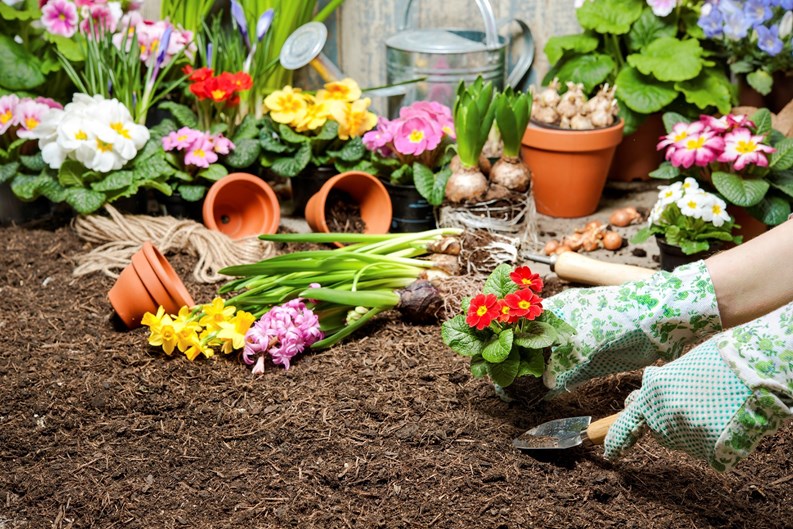
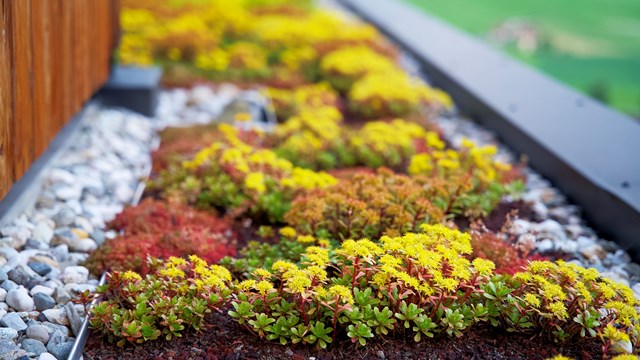

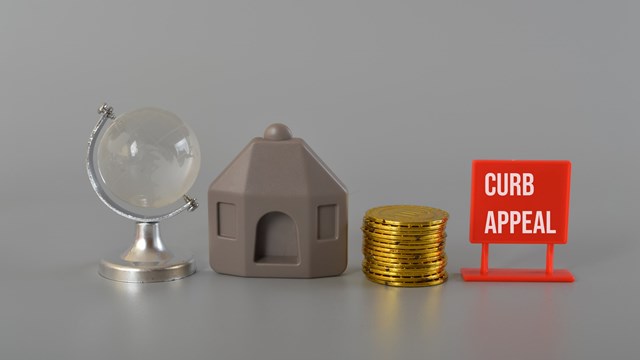
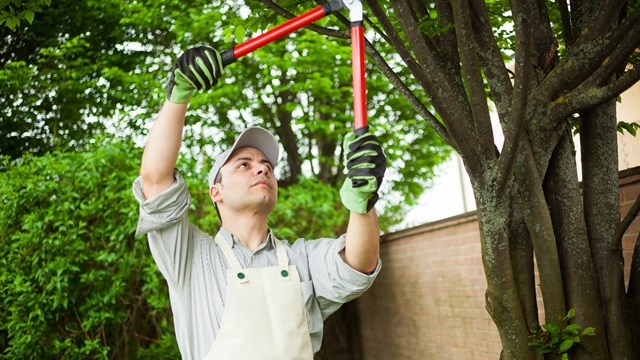

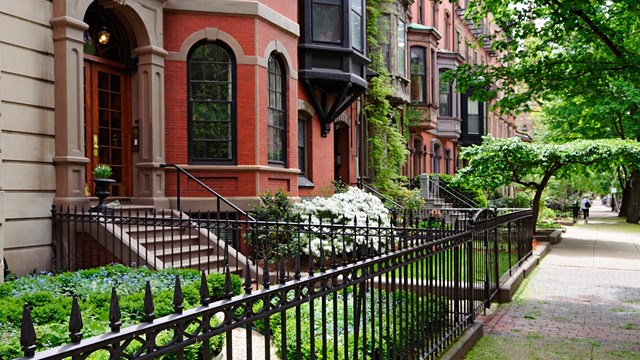
Leave a Comment